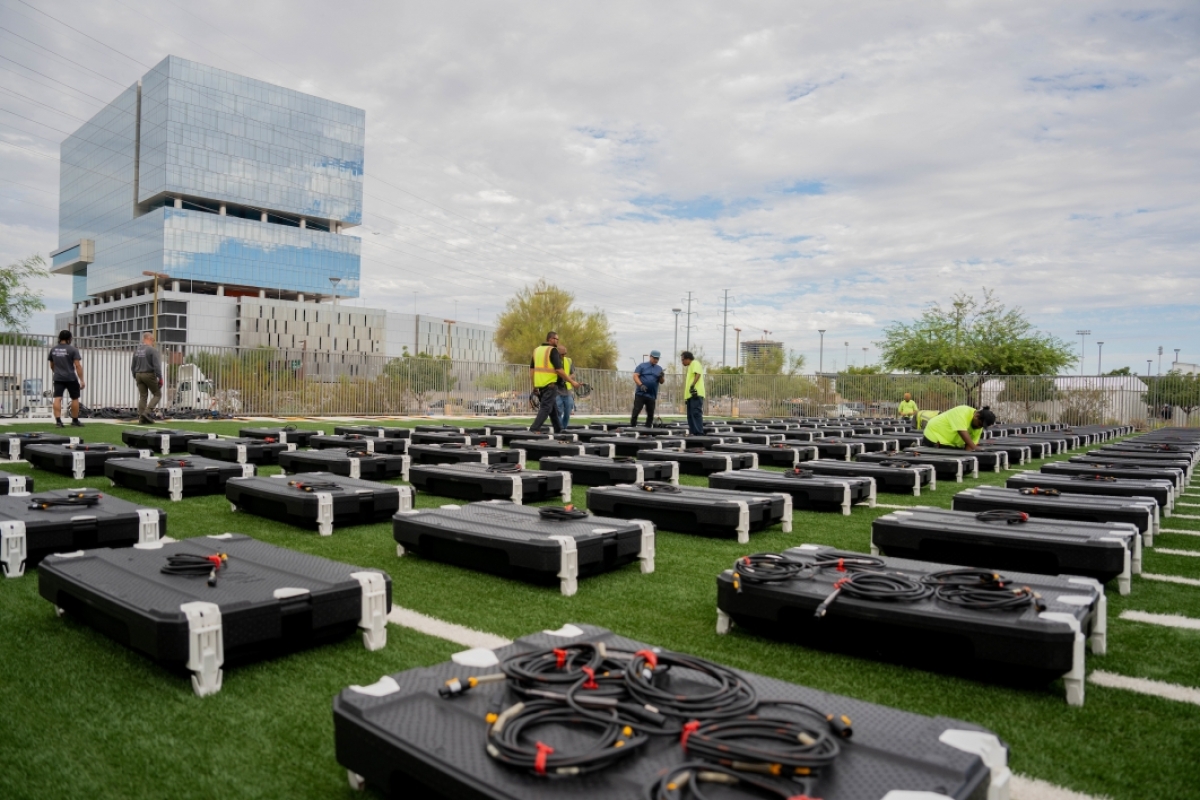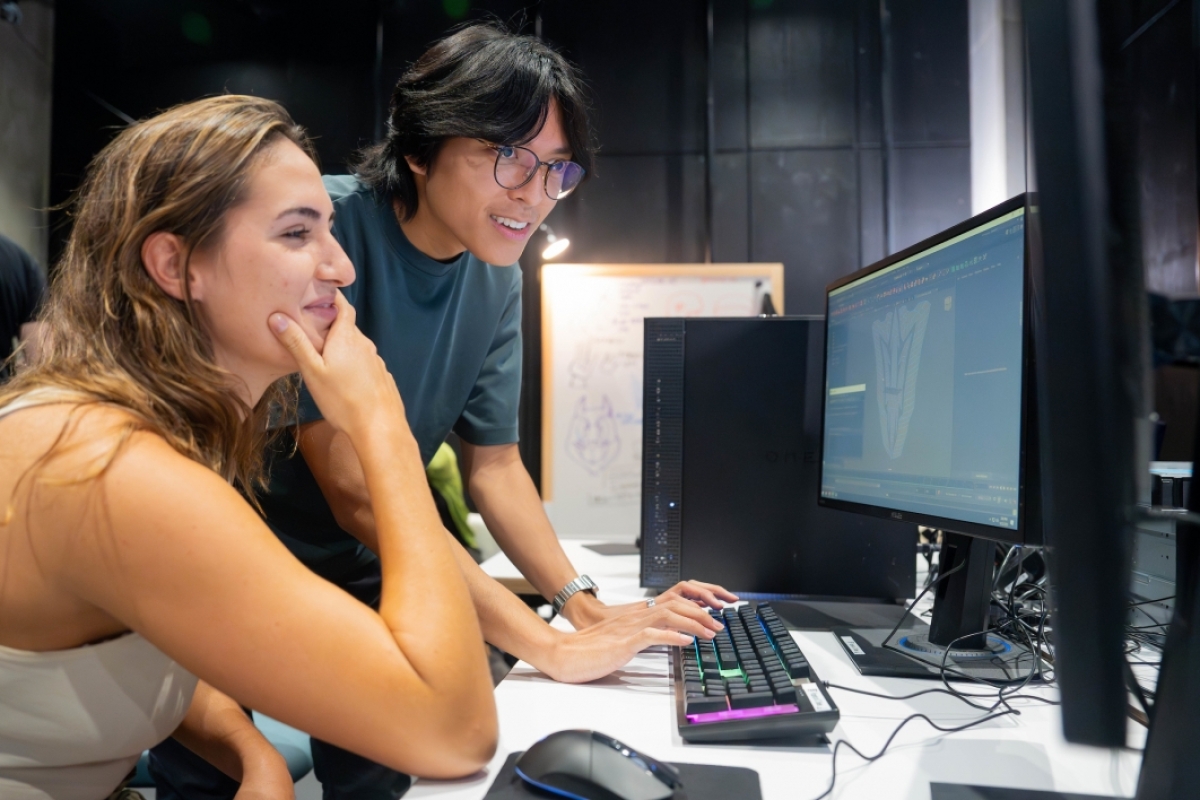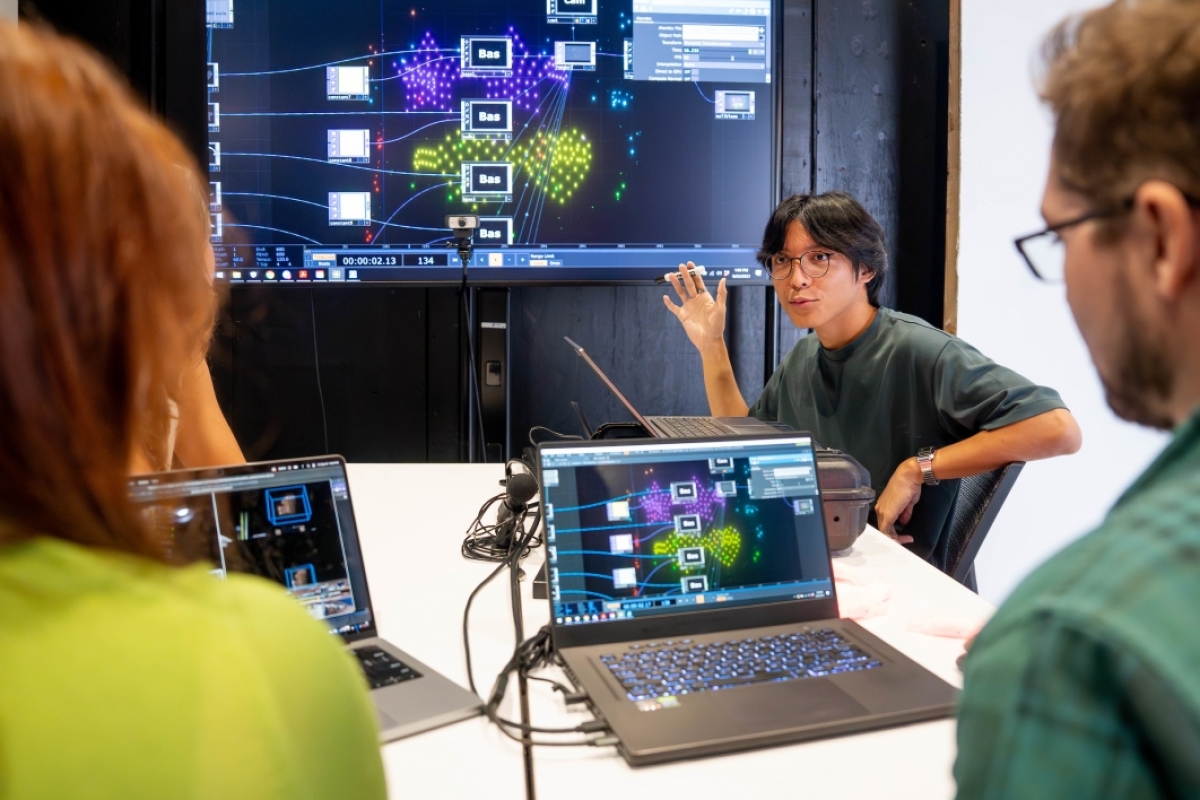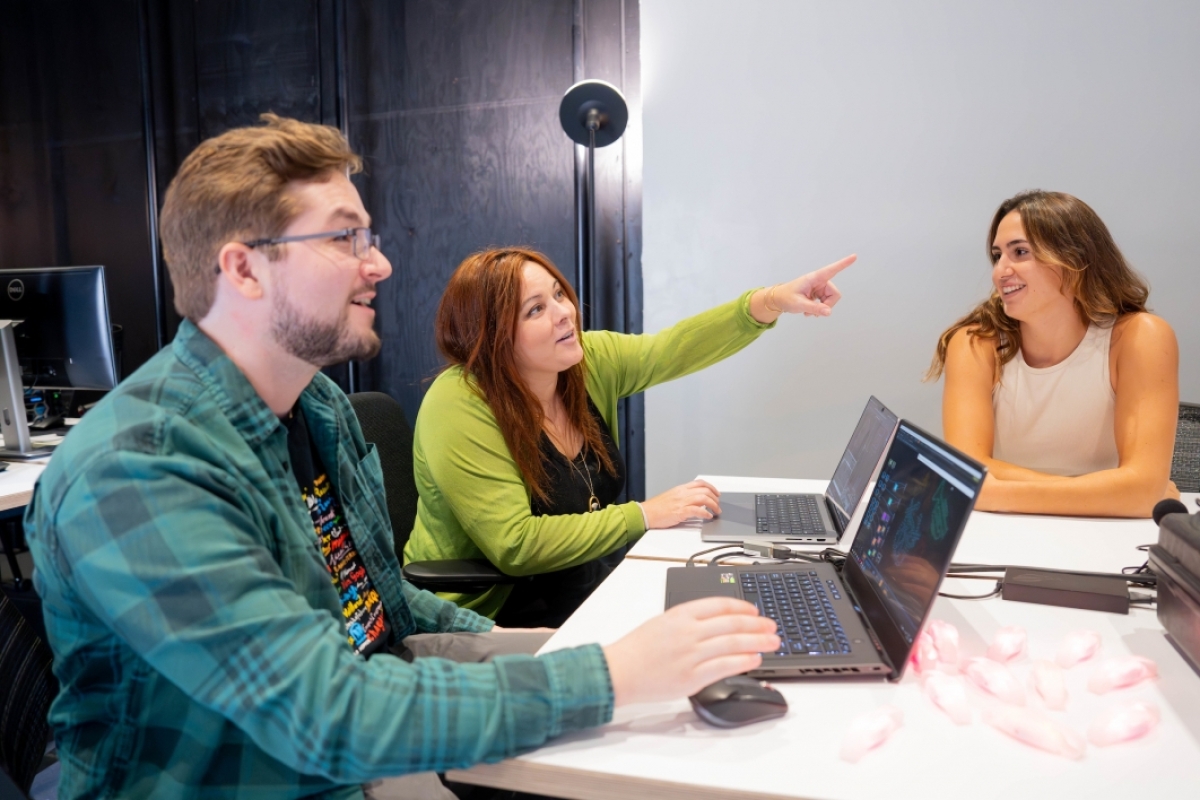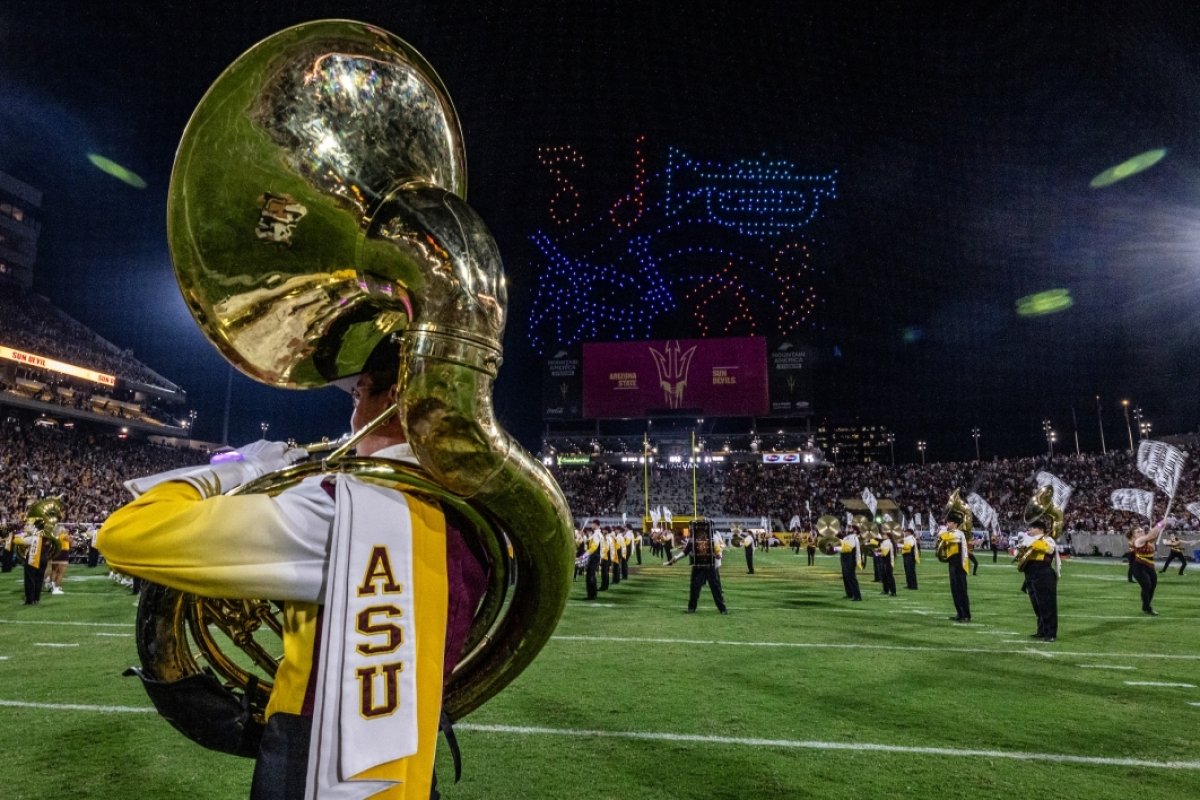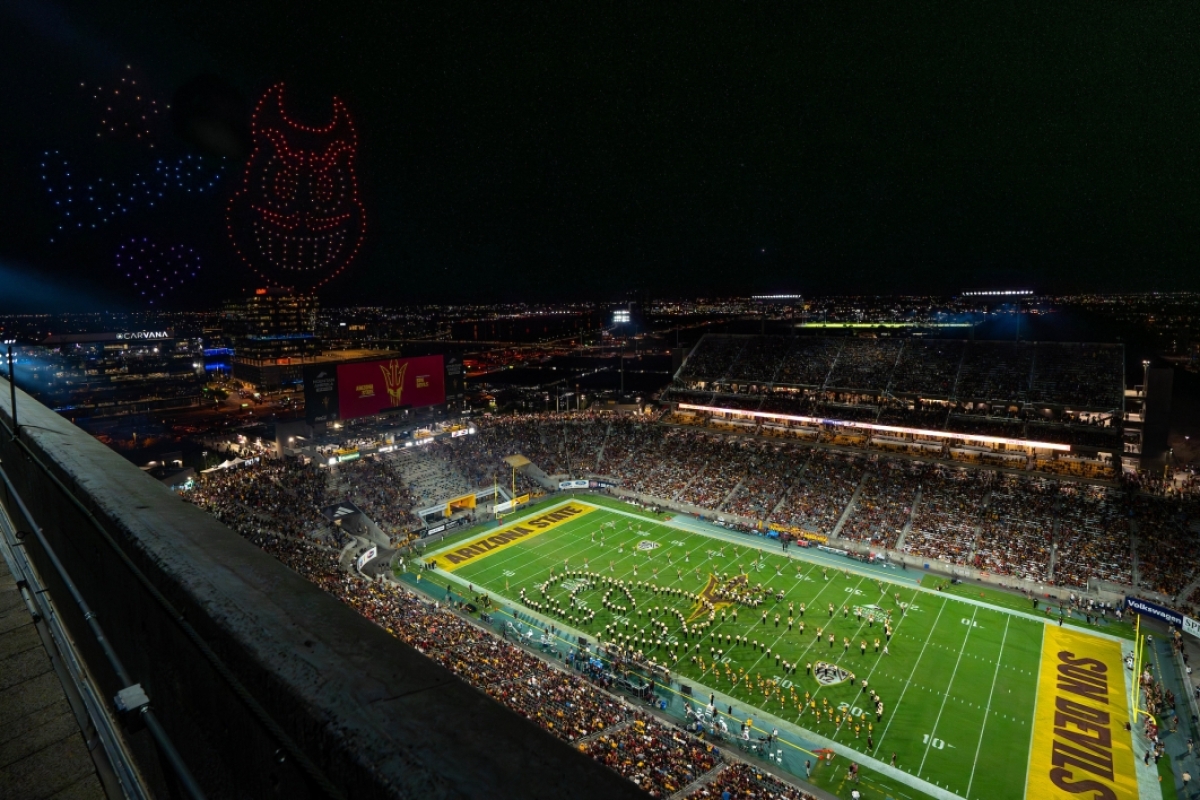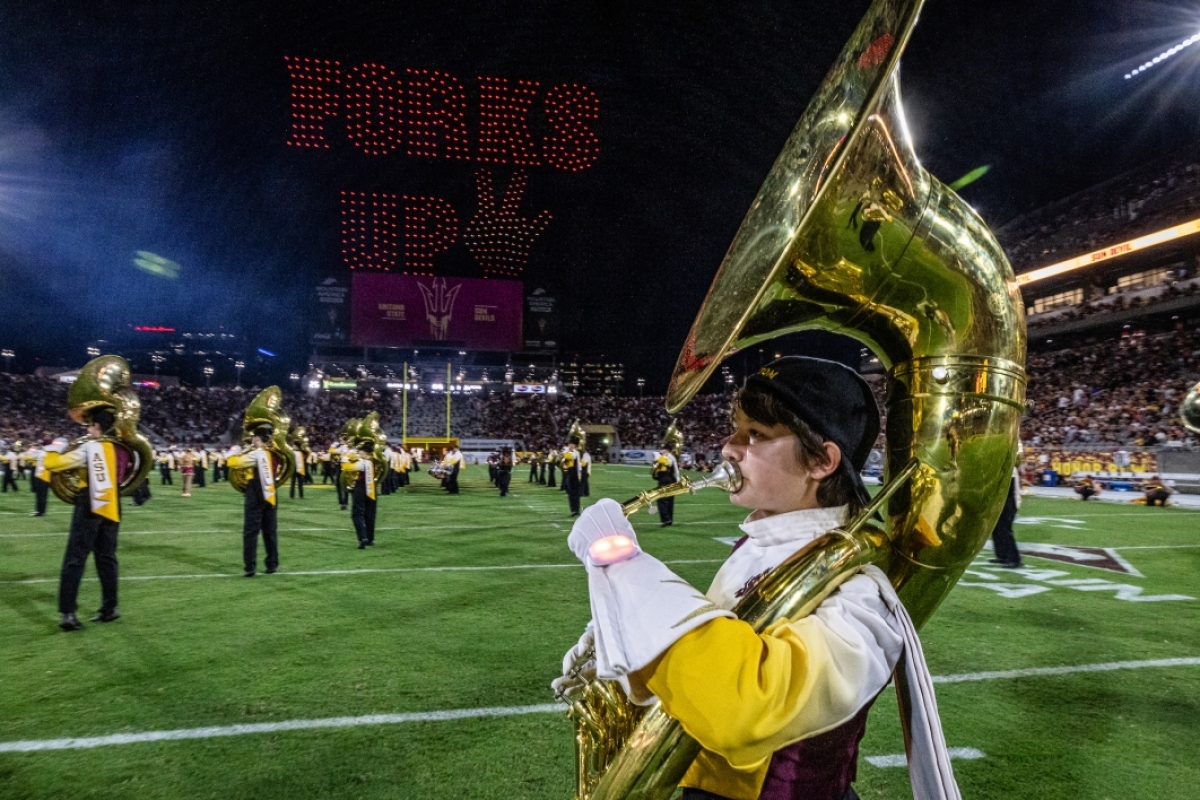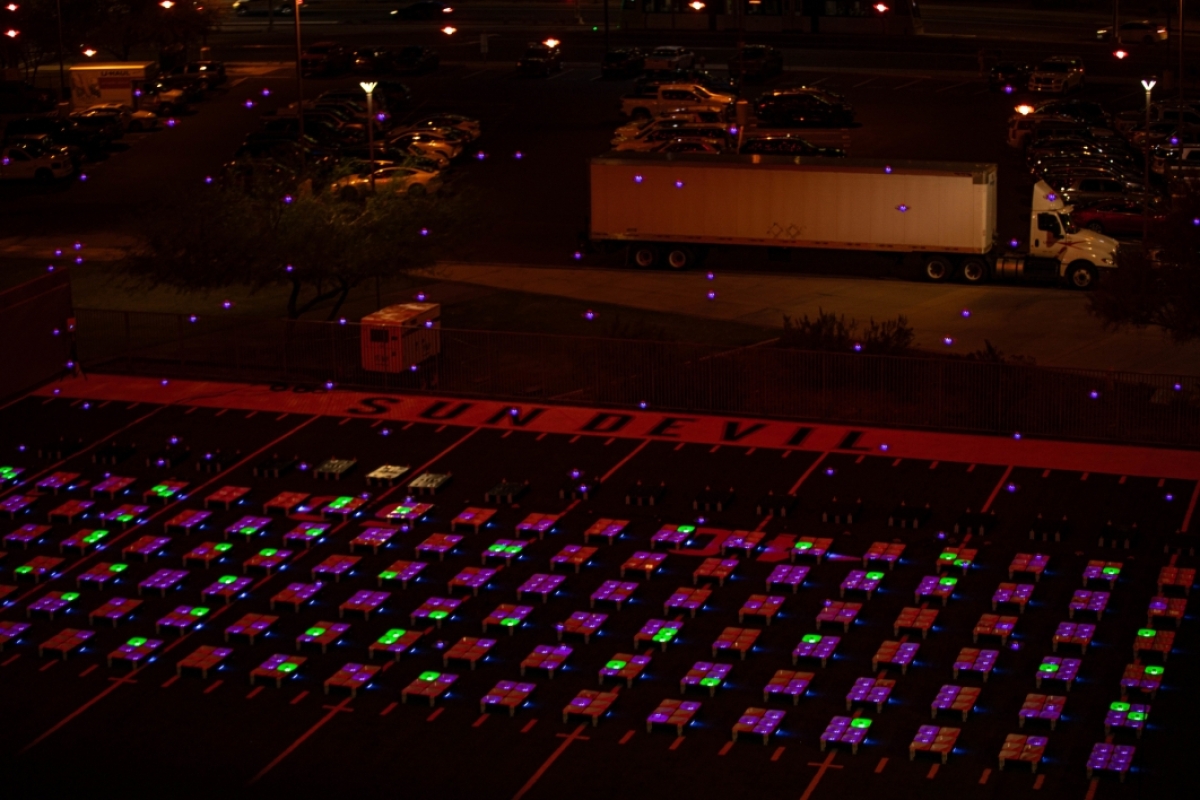ASU students design spectacular drone halftime show

Some 600 dancing drones fill the sky above Mountain America Stadium during halftime on Saturday, Sept. 23. The show was the result of a collaboration between Nova Sky Solutions drone entertainment company and ASU’s Herberger Institute for Design and the Arts’ choreography, and thanks to a donation by the Swette family. The four- to five-minute show featured designs including Sparky, Forks Up and the Sun Devil pitchfork, a highlight of the Sun Devils’ final PAC-12 football game against USC. Photo by Nova Sky Stories
Editor’s note: This story is featured in the 2023 year in review.
A team from Arizona State University animated the sky with 600 lighted drones in a spectacular show before more than 53,000 people at Mountain America Stadium on Saturday night.
The four- to five-minute drone show during halftime of the ASU football game was designed by three students and a professor in the Herberger Institute for Design and the Arts.
The drones danced in a space above the scoreboard that was as big as a 30-story building, swirling and zipping around to create a series of three-dimensional animations, including a drum, the ASU logo, a spinning pitchfork, Sparky and a gigantic football helmet. The drone colors were synched to the Sun Devil Marching Band, whose members wore glowing LED bracelets that emitted radio signals.
The show was the culmination of nearly three months of work by Ana Herruzo, an associate professor in The Design School and the School of Arts, Media and Engineering, who recruited Henry Beach, in his third year of a Master of Fine Arts program in theatre (interdisciplinary digital media), and Alba Olivé Martí and Derrek Sekito, both fourth-year animation majors in the School of Art.
Beach, who was the project manager and production director, said he was thrilled with how the show turned out after endless hours spent in front of a computer screen in the design phase.
“The crowd's reaction was amazing — to hear them cheer when the drones would transition to a new scene,” he said.
“But mostly the scale of the drone show was just so beyond anything we expected. We spent weeks building out our show in pre-visualization so that we could wrap our heads around what the design of the show would look like in reality, but it's just so hard to depict the volume it actually takes up in air space over the stadium.”
The show was set to the marching band's performance of the music of Elton John, marking the 50th anniversary of the release of “Goodbye Yellow Brick Road.”
The project was done in partnership with Nova Sky Stories, a drone company founded by Kimbal Musk, brother of Elon Musk, and was funded by a donation from the Swette family, longtime donors to ASU.
Tricky technical details
Herruzo’s background is in large-scale, interactive audiovisual shows — “anything that interacts with people at a large scale,” she said.
She teaches immersive experience design and leads the MEDIAted eXperiences Lab in the Media and Immersive eXperience Center in Mesa.
She was first approached about the project in June, ensuring a short timeline for such a big project. Herruzo said the goal was to follow the donor’s wishes to “electrify the marching band.”
Then she began collaborating with Nova Sky Stories, which was founded by Kimbal Musk in June 2022. He was inspired to found the company in 2021, during the pandemic-impacted Burning Man gathering in the Nevada desert, when the iconic burning of the large wooden man figure was instead a drone show.
Musk said that a friend suggested collaborating with ASU because of the high quality and cutting-edge educational practices of The Design School.
"I have always been interested in supporting and exploring the intersection of art, technology and education, and this idea quickly appeared to be a fantastic fit,” he said.
Herruzo hired her student workers in August, and they began working on the design, which had several constraints. Because the drones are not allowed to fly above people, there was a strict “bounding box” space above the scoreboard. The drones took off from the practice field next to the stadium.
“This design is specific to these 600 (drone) points, and there are very tricky technical details they had to learn and they did such a good job,” she said.
As the project and production manager, Beach juggled many responsibilities — everything from dealing with the company that provided the LED wristbands to making sure there was a tent with food for the drone pilots the day of the show. He coordinated with the stadium facilities team, the marching band and Nova Sky Stories. And he worked with Olivé Martí and Sekito to create a software tool to visualize the animated show.
“There are a lot of design constraints when working on a drone show in terms of how they have to model the animation and account for things like making sure the drones don’t collide with each other in the air,” said Beach, who is a research assistant in the MEDIAted eXperiences Lab.
“So when modeling and working on these designs, they did a great job of adapting their own style to the limitations of the medium.”
After designing the show, the team’s models were uploaded to Nova Sky Stories, which programmed its small, lightweight drones.
Olivé Martí is on the Sun Devil water polo team.
“It was very interesting to me to bring art and sports together, so that was really exciting,” she said.
“At the beginning, me and Derrek were doing storyboards when we realized the limits. At one of the meetings, I was really happy with one of my models, and everyone said, ‘That’s not going to work.’ So OK, I had to completely change it.
“When you’re working on it, you feel like 600 points will not be enough.”
Sekito said he had never done anything like this but was excited to learn the process and the tools.
“We had a specific bounding box we had to animate in because the drones are not allowed to fly over people, and we had to keep the power lines in mind,” he said.
“It was a challenge at first. There were a lot of different parts and everything was always changing, so we had to stay flexible in our design.”
Herruzo said that the faculty in the School of Arts, Media and Engineering are hybrids of technology and design.
“And the students who graduate from here have those skills,” she said.
Video by ASU Media Relations
A new medium
Saturday’s event was the first drone show ever held at ASU, but Herruzo is working with Nova Sky Stories to continue the collaboration in a class that would teach drone design.
Jeremy Stein, chief operating officer of Nova Sky Stories, sees drone shows as a new way of telling stories.
"Drone light shows, and the version of art we call ‘sky stories,’ are a mega powerful new medium that combines amazing art, technology and enormous scale," he said.
"Our images in the sky can be the size of the tallest buildings while touching the hearts of global audiences.”
Stein said that Sky Stories is just scratching the surface of artistic expression.
“We are now embarking on a new generation of ideas to create with this medium, educate across many disciplines and discover technological advances,” he said.
“Similar to when the camera was invented, new forms of art and expression will now surface. It’s incredibly exciting.”
Steven Tepper, dean of the Herberger Institute, said that the partnership will benefit students.
“Thanks to outstanding faculty like Ana Herruzo and our leadership at the intersection of art, design and technology, ASU students are able to learn from partners like Nova Sky Stories, who are at the forefront of this new medium,” he said.
“Not only do the students get high-level professional experience — in this case, they also have the extraordinary opportunity to see their own designs come to life in the sky above the stadium.”
Stein said that educating students on this new medium is important.
"As humans, we can only realize the potential of this new medium by inviting all generations to take part," he said.
“Ensuring that our efforts are open-sourced will allow for many ideas to rise. Thus, it is critical to create bridges with education leaders such as ASU’s Design School. Nova Sky Stories is thrilled to explore opportunities to support a new generation of designers to test the boundaries of what is possible.”
More Science and technology

ASU to host 2 new 51 Pegasi b Fellows, cementing leadership in exoplanet research
Arizona State University continues its rapid rise in planetary astronomy, welcoming two new 51 Pegasi b Fellows to its exoplanet research team in fall 2025. The Heising-Simons Foundation awarded the…

ASU students win big at homeland security design challenge
By Cynthia GerberArizona State University students took home five prizes — including two first-place victories — from this year’s Designing Actionable Solutions for a Secure Homeland student design…

Swarm science: Oral bacteria move in waves to spread and survive
Swarming behaviors appear everywhere in nature — from schools of fish darting in synchrony to locusts sweeping across landscapes in coordinated waves. On winter evenings, just before dusk, hundreds…


